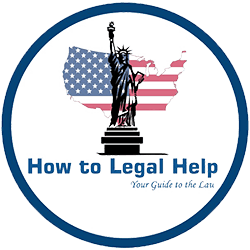Subd. 1. Joinder of Offenses. When the defendant’s conduct constitutes more than one offense, each offense may be charged in the same charging document in a separate count.
Subd. 2. Joinder of Defendants. When two or more defendants are charged with the same offense, they may be tried separately or jointly at the court’s discretion. To determine whether to order joinder or separate trials, the court must consider:
(1) the nature of the offense charged;
(2) the impact on the victim;
(3) the potential prejudice to the defendant; and
(4) the interests of justice.
In all cases any one or more of the defendants may be convicted or acquitted.
Subd. 3. Severance of Offenses or Defendants.
(1) Severance of Offenses. On motion of the prosecutor or the defendant, the court must sever offenses or charges if:
(a) the offenses or charges are not related;
(b) before trial, the court determines severance is appropriate to promote a fair determination of the defendant’s guilt or innocence of each offense or charge; or
(c) during trial, with the defendant’s consent or on a finding of manifest necessity, the court determines severance is necessary to fairly determine the defendant’s guilt or innocence of each offense or charge.
(2) Severance from Codefendant because of Codefendant’s Out-of-Court Statement. On a defendant’s motion for severance from a codefendant because a codefendant’s out-of-court statement refers to but is not admissible against the defendant, the court must determine whether the prosecutor intends to offer the statement as evidence during its case in chief. If so, the court must require the prosecutor to elect one of the following options:
(a) a joint trial at which the statement is not received in evidence;
(b) a joint trial at which the statement is only received in evidence after all references to the defendant have been deleted, if the statement’s admission with the deletions will not prejudice the defendant; or
(c) the defendant’s severance.
(3) Severance of Defendants During Trial. The court must sever defendants during trial, with the defendant’s consent or on a finding of manifest necessity, if the court determines severance is necessary to fairly determine the guilt or innocence of one or more of the defendants.
Subd. 4. Consolidation of Charging Documents for Trial.
(a) The court, on the prosecutor’s motion, or on its initiative, may order two or more charging documents to be tried together if the offenses and the defendants could have been joined in a single charging document.
(b) On a defendant’s motion, the court may order two or more charging documents to be tried together even if the offenses and the defendants could not have been joined in a single charging document.
(c) In all cases, the procedure will be the same as if the prosecution were under a single charging document.
Subd. 5. Dual Representation. When 2 or more defendants are jointly charged or will be tried jointly under subdivisions 2 or 4 of this rule, and 2 or more of them are represented by the same attorney, the following procedure must be followed before plea and trial.
(1) The court must:
(a) address each defendant personally on the record;
(b) advise each defendant of the potential danger of dual representation; and
(c) give each defendant an opportunity to question the court on the complexities and possible consequences of dual representation.
(2) The court must elicit from each defendant in a narrative statement that the defendant:
(a) has been advised of the right to effective representation;
(b) understands the details of defense counsel’s possible conflict of interest and the potential perils of such a conflict;
(c) has discussed the matter with defense counsel, or if the defendant wishes, with outside counsel; and
(d) voluntarily waives the constitutional right to separate counsel.
Amended April 22, 2015, effective July 1, 2015.
